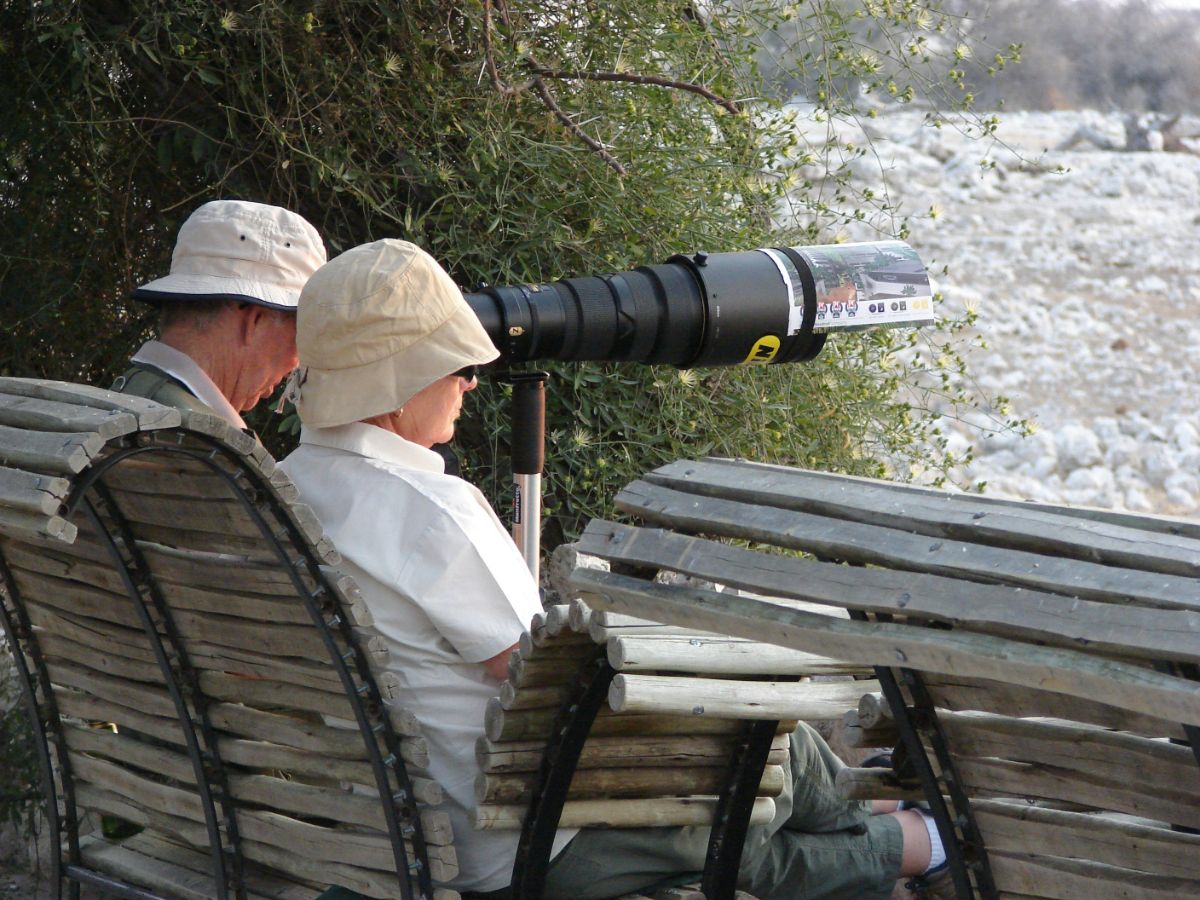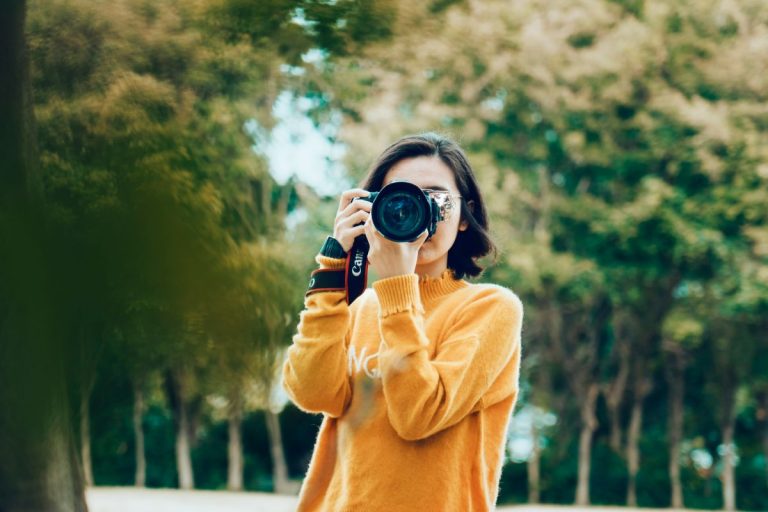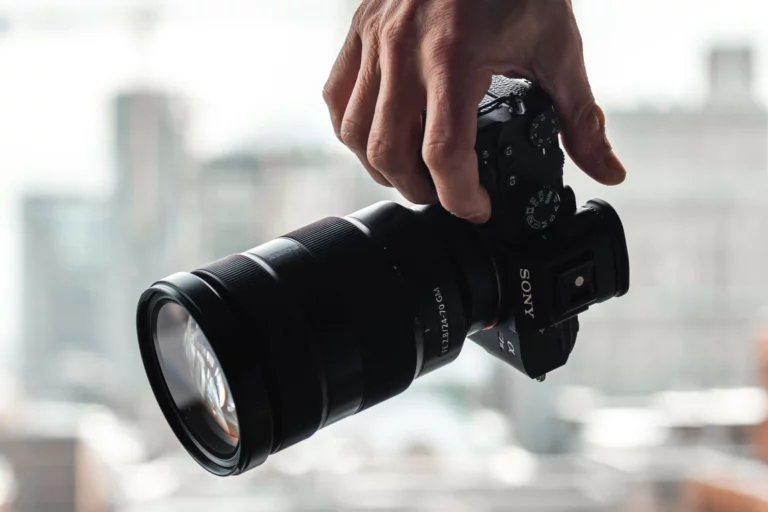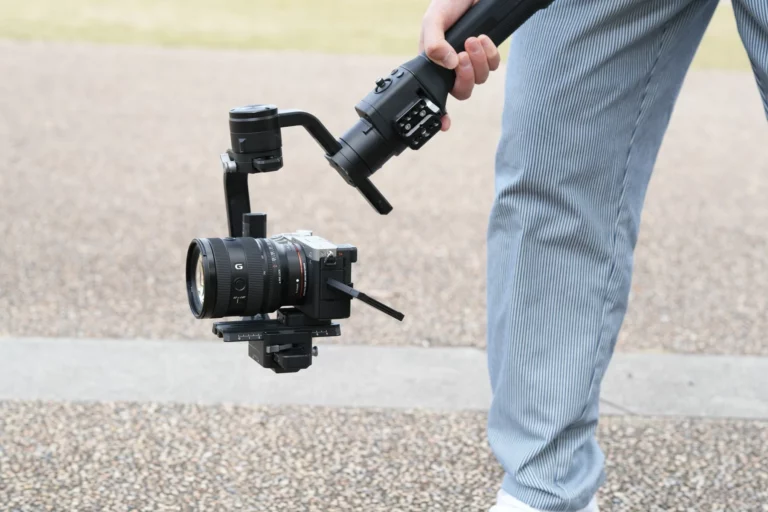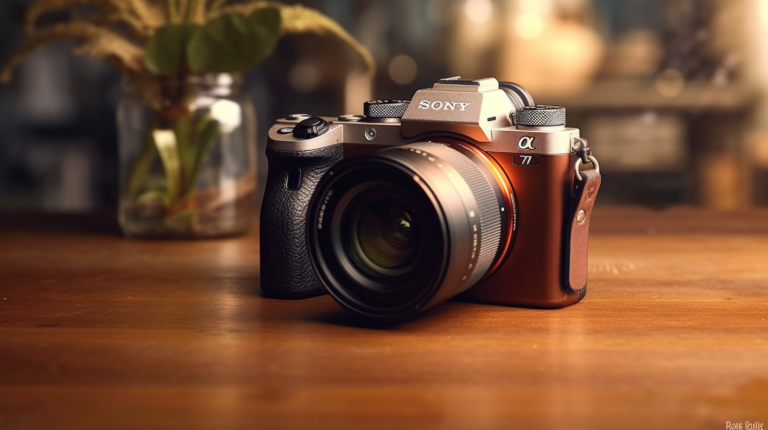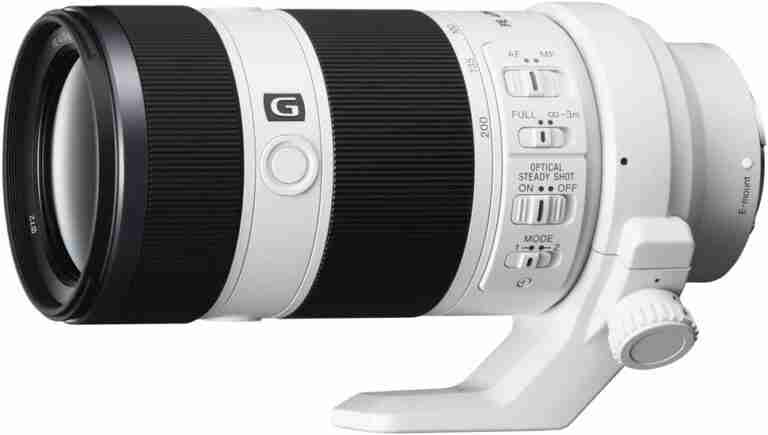Top 5 Best Budget Telephoto Lens For Sony E Mount in 2024
What up, my homies! Your friendly neighborhood camera nerd here. Gotta drop some knowledge for all my Sony mirrorless camera shooters looking to step up their telephoto game without emptying their wallets.
See, we all get hyped over Sony’s dope full-frame cameras like the A7 IV and A7S III. But damn, those pro-level Sony zoom lenses can cost an arm, a leg, and your first-born child. Not exactly ideal for the average broke photographer.
Thankfully, there are now some solid budget telephoto lenses for E-mount from third-party brands. These let you unlock the full potential of your Sony alpha without taking out a second mortgage. Ain’t nobody got time for that!
Let’s break it down.
Contents
- Living That Long Lens Life Ain’t Cheap…Or Is It?
- Choose Telephoto Lenses Like You Would a Date
- 1. Tamron 70-300mm F4.5-6.3 Di III RXD
- 2. Sony FE 70-300mm F4.5-5.6 G OSS
- 3. Rokinon 135mm f/2 ED UMC
- 4. Sigma 100-400mm f/5-6.3 DG DN OS Contemporary Lens
- 5. Samyang AF 75mm f/1.8 FE Lens
- Hear From Real Users
- Thinking About Expanding Your Arsenal Beyond the Telephoto?
- My Final Thoughts On Best Budget Telephoto Lens For Sony E Mount
Living That Long Lens Life Ain’t Cheap…Or Is It?
For real though, telephoto lenses long enough to capture your kid’s soccer game or snag that perfect portrait lens are straight up expensive:
- The kit lenses that come with Sony cameras usually top out around 200mm, which just doesn’t cut it if you need real telephoto reach.
- Sony’s pro FE 70-200mm and 100-400mm zoom lenses cost $2,000+ and are heavy as hell. Not fun to carry all day.
- Prime lenses like the Sony 600mm f/4 GM? Ha! Try $13,000 big ones. No thanks.
But now, third parties like Tamron, Sigma, and Samyang are hooking up budget-conscious shooters with way more affordable telephoto options for E-mount.
They may not be top-shelf optics, but they get you 90% of the way there for a fraction of the price. I’m here to highlight the dopest lenses that won’t leave you starved and homeless. Let’s go!
Choose Telephoto Lenses Like You Would a Date
Before jumping into specific lenses, here are some tips for picking the right telephoto glass:
- Look for at least 300mm focal length – Anything less than 300mm is not really considered true telephoto territory. You need 300mm+ for subjects far away.
- Aim for f/2.8 or wider aperture – Those buttery bokeh portraits and action shots require fast glass. f/2.8 or better lets you shoot in lower light too.
- Make sure it has image stabilization – Reduces blur from camera shake, especially important at long focal lengths.
- Get something lightweight – Telephoto lenses get heavy, so keep weight low if handholding for extended periods.
- Check image quality – Sharpness, distortion, flare resistance etc. A deal isn’t a deal if the images look like crap.
- Consider weather sealing – For outdoor, adventure, and wildlife shooting, sealing helps lenses survive the elements.
1. Tamron 70-300mm F4.5-6.3 Di III RXD

Tamron’s take on the 70-300mm for Sony clocks in at an insanely light 545g. It’s plastic-y but gets you in the telephoto game on a tight budget.
Key Features:
- Lightweight design at just 545g
- Moisture-resistant construction
- RXD stepping motor AF
Pros:
- Excellent sharpness for the price
- Quick, accurate autofocus
- Compact and easy to handhold
- Good close focusing ability
Cons:
- Plastic construction feels cheaper
- Prone to flare when shooting into light
- No optical stabilization
2. Sony FE 70-300mm F4.5-5.6 G OSS
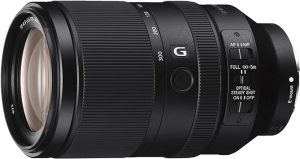
A lighter and cheaper alternative to Sony’s pricier telephoto zooms. It covers excellent range, has optical stabilization, and is pretty lightweight.
Key Features:
- Focal length range of 70-300mm covers portrait to telephoto
- Included optical stabilization
- Lightweight and compact form factor
- Dust and moisture resistant construction
Pros:
- Great balance of price, performance and portability
- Fast, quiet autofocus
- Very sharp optics across zoom range
- 5 stops of image stabilization
Cons:
- Maximum aperture of f/5.6 on long end limits low light performance
- Some distortion at 300mm
- No weather sealing
3. Rokinon 135mm f/2 ED UMC
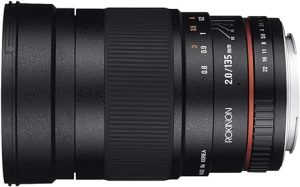
The Rokinon 135mm f/2 ED UMC is a budget-friendly telephoto lens that’s perfect for portrait, sports, and wildlife photography. This lens has an all-metal construction, making it quite sturdy and durable. It may not have the most extensive zoom range, but its fixed focal length of 135mm gives you a tight and compressed field of view that’s perfect for capturing artistic bokeh and isolating your subject from the background.
Key Features:
- Manual focus design
- Aperture range of f/2 to f/22
- ED lens element for reduced chromatic aberration
Pros:
- Affordable price
- Excellent sharpness, even when shooting wide open at f/2
- Very good build quality with all-metal construction
- Compact and lightweight for a 135mm lens
Cons:
- Manual focus only may not suit all photographers
- No image stabilization
- No weather sealing
The Rokinon 135mm f/2 ED UMC is a lens that punches above its weight in terms of sharpness and image quality. Its fast aperture of f/2 allows you to shoot in low light conditions without sacrificing image quality. The all-metal construction of this lens also adds to its premium feel and durability. However, given the manual focus design and lack of image stabilization, this lens may not be suitable for everyone. Overall, for photographers who are looking for an affordable telephoto lens that delivers sharp and detailed results, the Rokinon 135mm f/2 ED UMC is definitely worth considering.
4. Sigma 100-400mm f/5-6.3 DG DN OS Contemporary Lens
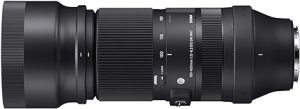
The Sigma 100-400mm f/5-6.3 DG DN OS is a versatile telephoto zoom lens designed specifically for Sony E-mount cameras. This lens offers an impressive focal length range of 100-400mm, making it ideal for wildlife, sports, and nature photography. With its compact and lightweight design, it’s easy to carry around and handle. The lens features excellent built-in optical stabilization technology, ensuring sharp and blur-free images even at longer focal lengths.
Key Features:
- Impressive focal length range of 100-400mm
- Built-in optical stabilization for steady shots
- Compact and lightweight design
- High-speed and accurate autofocus
Pros:
- Exceptional image quality with good sharpness and contrast
- Effective built-in optical stabilization for handheld shooting
- Smooth and reliable autofocus performance
- Minimal distortion throughout the zoom range
- Quiet operation for capturing wildlife or in quiet environments
Cons:
- Variable maximum aperture of f/5-6.3 limits low light performance
- Slight softness at the extreme end of the zoom range
- Autofocus may struggle in challenging lighting conditions
The Sigma 100-400mm f/5-6.3 DG DN OS Contemporary Lens delivers excellent performance and image quality throughout its versatile focal range. Its compact and lightweight design makes it a convenient choice for outdoor photography. The built-in optical stabilization ensures sharp images, even when shooting handheld. Although it may not perform as well in low light conditions due to its variable maximum aperture, this lens excels in well-lit environments. For photographers looking for an affordable and high-quality telephoto zoom lens, the Sigma 100-400mm f/5-6.3 DG DN OS Contemporary Lens is a solid choice.
5. Samyang AF 75mm f/1.8 FE Lens
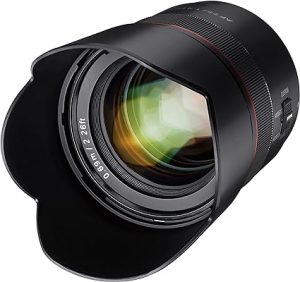
The Samyang AF 75mm f/1.8 FE Lens is a prime telephoto lens designed for Sony E-mount cameras. With a focal length of 75mm and a fast maximum aperture of f/1.8, this lens is great for portraits, street photography, and low-light shooting. The compact and lightweight design of the lens makes it easy to carry around and use. It features fast and accurate autofocus, making it suitable for capturing moving subjects with precision.
Key Features:
- Focal length of 75mm
- Fast maximum aperture of f/1.8
- Compact and lightweight design
- Fast and quiet autofocus system
Pros:
- Excellent image quality with sharpness and clarity
- Beautiful bokeh for isolating subjects
- Fast aperture for shooting in low-light conditions
- Compact and portable design for on-the-go shooting
- Smooth and quiet autofocus performance
Cons:
- Some chromatic aberration may be noticeable in high-contrast scenes
- Manual focus ring could be more precise
The Samyang AF 75mm f/1.8 FE Lens is a fantastic prime telephoto lens for Sony E-mount cameras that excels in portrait and street photography. Its fast aperture of f/1.8 allows for creative depth of field effects and shooting in challenging lighting conditions. The lens delivers excellent image quality with sharpness and beautiful bokeh. While there may be some minor issues like chromatic aberration in certain situations, overall, the lens offers great value for photographers looking for a high-quality telephoto lens with a fast aperture.
Hear From Real Users
Comment
byu/Emotional_Ad7324 from discussion
inSonyAlpha
Comment
byu/Emotional_Ad7324 from discussion
inSonyAlpha
Thinking About Expanding Your Arsenal Beyond the Telephoto?
While telephoto lenses are essential for capturing distant subjects with great image quality, don’t overlook the versatility other lenses offer.
A wide-angle lens can be just as crucial for landscape and architectural photography. Combining a telephoto with a wide-angle can cover most shooting scenarios.
Two lenses in your camera bag – a telephoto and a wide-angle – ensure you’re prepared for anything. For those interested in wildlife or sports, a lens with optical stabilizer technology, like Sony’s Optical SteadyShot stabilization, can be a game-changer, helping to maintain sharp image quality even at longer focal lengths or slower shutter speeds.
For Sony mirrorless cameras, both APS-C and full-frame sensors offer distinct advantages. Full-frame lenses provide a wider field of view and typically better performance in low light, while APS-C sensor cameras, with their crop factor, can give a telephoto lens an even longer effective focal length, perfect for shooting wildlife.
Speaking of APS-C cameras, they’re not just a budget option but a strategic choice for many. The crop sensor camera can make a 200mm lens behave like a 300mm lens, offering more reach without the need for swapping lenses. This can be particularly useful when you’re trying to keep your kit light, whether you’re hiking into the backcountry or spending the day on the sidelines of a sports event.
Manual focusing can also offer unparalleled control for capturing those tack sharp images, especially in challenging lighting conditions or when dealing with tricky subjects like birds in flight. And for those truly epic shots, don’t forget about the power of in-body stabilization and lenses with built-in stabilizers, which can make a noticeable difference in reducing blur.
Let’s not forget about prime lenses, known for their impressive image quality and solid build quality. A good prime lens can be a portrait lens or a dedicated wildlife lens, offering sharp image quality with a fixed focal length that forces creativity and composition prowess.
My Final Thoughts On Best Budget Telephoto Lens For Sony E Mount
There you have it, friends – a couple of solid budget telephoto zoom options to step up your Sony mirrorless camera game without emptying the bank account.
I focused on lighter 70-300mm lenses here, but watch for upcoming 135mm and 70-200mm primes and zooms from third parties too. More choice is always better!
Now you’ve got no excuses. Get out there, strap one of these sweet telephotos on your Sony, and start shooting legendary portraits, sports, wildlife, and anything else that requires reach.
The power is now in your hands. Wield it wisely my friends! Until next time…
Peace ✌️
- What Cameras Can You Use on PS5? A Compatibility Guide in 2024 - January 14, 2024
- What Cameras Support Windows Hello? A Guide to Compatible Devices - January 13, 2024
- 11 Best Cameras For Security With Night Vision In 2024 - August 9, 2023

